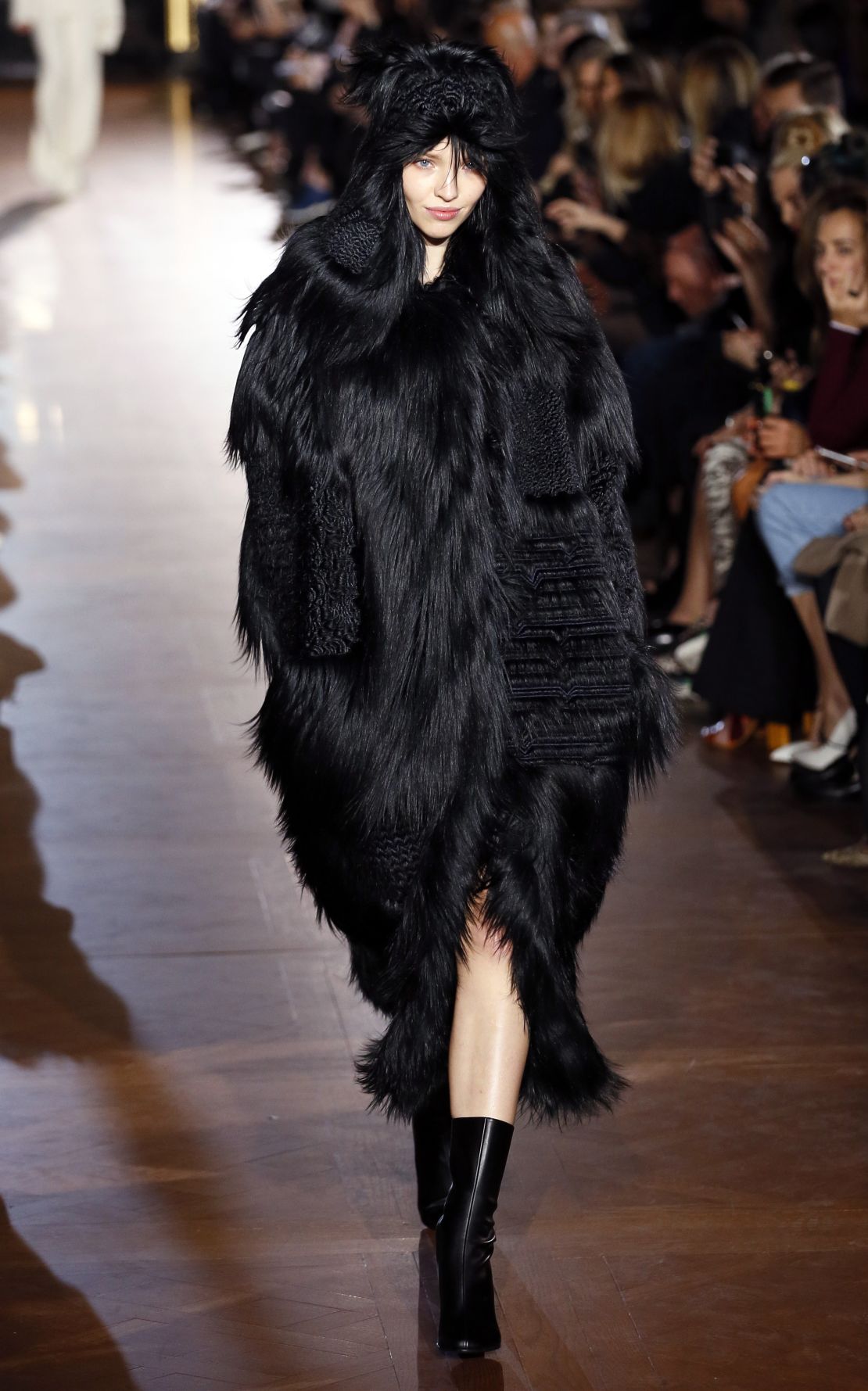For the creative director of a multimillion dollar luxury fashion brand, Stella McCartney is surprisingly willing to bring up the industry’s faults.
“Luxury fashion is incredibly harmful, (and so is) fashion in general. It needs to get more modern and man up,” she said in a conversation with Business of Fashion (BoF) editor Imran Amed this summer.
Touching on everything from the harmful chemicals used in tanneries to the link between deforestation and the leather trade, she chastised luxury fashion’s massive, damaging footprint to a crowd that included designers Vivienne Westwood and Peter Pilotto.
McCartney, the face of a special print issue of BoF addressing the industry’s key problems, is a longstanding advocate for sustainable fashion. Her animal-free mandate is unique in an industry that relies heavily on the sales of leather goods and trades in on the perceived glamor of fur and skins. Her stores are also known for their eco-friendliness, with many relying on alternative energy.
McCartney spoke exclusively with CNN, giving her take on fake fur, advocacy, and how she’s pushing her business to be better.
CNN: You’re known as a fierce advocate for sustainable fashion. Why do you feel that, in your position especially, it’s so important to be vocal about your beliefs?
Stella McCartney: It’s just the way I was brought up. It’s been engrained in me to have respect for fellow creatures and to be mindful of how one approaches life, so it was a no-brainer for me to take that into the way that I conduct myself in business.
Why do you think that so few other designers with your clout seem to take a stance on these issues?
I think a lot of them don’t have the information, or they’re not aware of the impact. I think a lot of them don’t care, sadly, and some of them probably want to do it but don’t really know how to start.
During the Q&A, Vivienne Westwood had a lot of questions about sustainability within her own practice. Where’s a good place for designers to start?
I would say the first step is to gather some information: look at where you’re manufacturing and where you’re sourcing. Just look at your raw materials and trace the journey, then question if they need to come to you in that way.
I wouldn’t use PVC’s, and I’d definitely cut out fur, absolutely first and foremost because there’s no reason to do it. It’s extraordinarily cruel and destructive material to use in fashion. And I would seriously look at alternatives to leather because it’s doable. Nobody knows that my shoes aren’t leather.
Just source! It’s available. You can do it now. And the more people who do it, the more demand it creates, and the more products we’ll have to use.
It’s like anything. You know, if everybody ate organic carrots, you’d only be able to buy organic carrots. That’s the way life works.
Your Autumn-Winter 2015 show featured massive faux fur coats that had everyone talking. Were you trying to send a message?
Yeah, I think so. I’d done fake fur many, many years ago, and I’d really questioned whether it was appropriate to do it, and if it was necessary. Because fake fur now looks so real, I was afraid that it was promoting real fur. But I created these fur-free fur labels that will be on the outside of the products, so you can actually tell people it’s not (real) … And you can’t tell the difference in the way that it looks and the way that it feels. I challenge you to do so.
I’ve spoken to a lot of young people they’re like “Please, give us fake fur, we don’t want real fur!”

I think of a young brand like Shrimps, which is known for its colorful fakes.
Yeah, I think they’re a great brand. And I think the reality is that, for me, real fur is extraordinarily old fashioned. I think you look old. Even if you’re 20 and you’ve got a real fur coat, you just look like an old, unaware, unconscious being on the planet. It’s not relevant, it’s not sexy, it’s not fashionable, and it’s not cool.
You’ve said that you’re always learning new things about sustainability that influence your business decisions. What changes have you made recently?
We’re opening stores around the world, and we’re working with local people to source better materials. We’re trying to see if they have wind-power there, or if they have solar power. (Sustainability) is in every single thing that we do, we try and approach it with that first and foremost in mind. And then if we can’t do it, we can’t do it and we’re just like everyone else. But our first and initial approach is can we do this in a mindful and responsible manner, and if we can, we do so.









